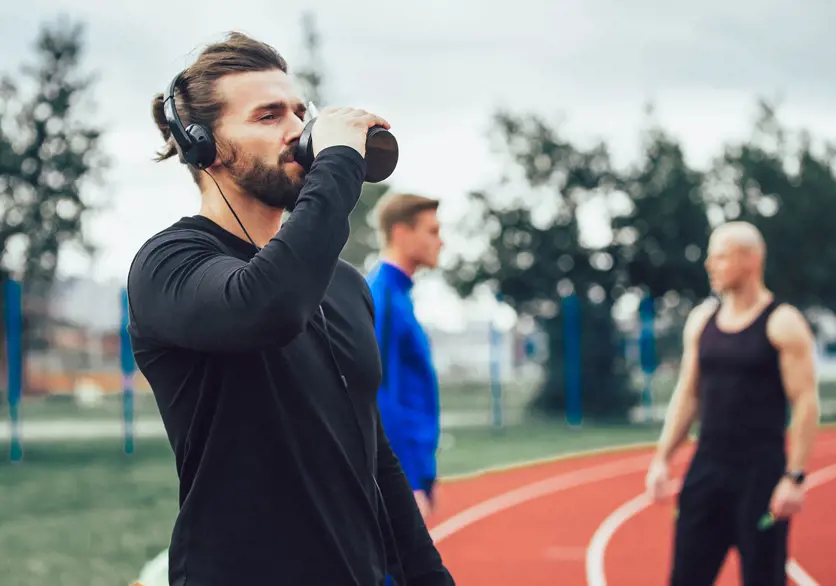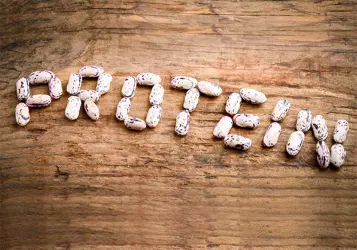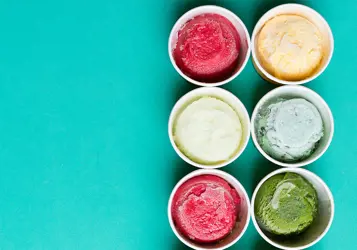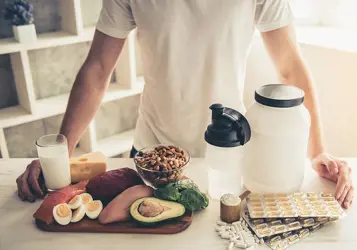2020 will go down as the quietest year in modern sporting history. The coronavirus pandemic has forced the postponement of the biggest events on the planet until 2021, including the Tokyo Olympics and the European football championships. Annual top draws such as the Tour de France and the Formula 1 World Championship have been delayed until later this year, with heavily crammed schedules now looming down the road.
For professional athletes, it’s been a highly challenging few months. With uncertainty around when competition will resume, they have had to adjust their training and nutrition regimens to stay fit. The absence of a competition calendar has taken away key goals and season peaks for athletes to focus on, so coaches and trainers have their work cut out to keep them motivated, and following relatively normal routines.
As a sports nutrition consultant, it’s my role to advise athletes on recovery, repair, maintaining muscle mass and preventing excessive gains in body fat. It’s all about ensuring that my clients are not too far away from where they need to be once the season finally resumes.
Key is remaining positive. Athletes have had a rare opportunity to experiment with new diets and training methods, with a view to returning to action in the best possible shape they can be. Non-competition is an opportunity to keep the body as replenished as possible in terms of nutrients such as selenium and iron, and to build up resistance for upcoming competition. Whey protein will be central to many effective personalized nutrition programs.
Finding advantage in a lockdown
While the COVID-19 period has been a forced leave of absence for everyone, self-discipline will determine who gets out of the starting blocks best when normality returns. At the start of each new season, you always see athletes in various sports who are a little overweight, and who will gradually lose it as the season progresses. But they will be challenged by other athletes coming into the season in top shape and who will be able maintain that form, or even get better. The current situation will magnify this further than ever before.
With little happening in the way of competition right now, many athletes have opted for less intense training programs that involve fewer sessions per day than normal. Their diets have therefore been adjusted to have a lower reliance on refined carbohydrates with a high glycemic index (e.g. bread, rice, pasta, and noodles), since rapid recovery is of lower priority. Right now, the primary goal is staying healthy, while maintaining lean muscle mass, and not gaining too much body fat. Obviously, protein is a key component in this strategy, both in terms of providing building blocks for muscle, but also for its appetite suppressing role, to help avoid excess calorie consumption. As well as the shift to consuming more calories from protein, there is a further onus on switching from refined carbohydrates to those that also contain fiber, such as root vegetables.
The current period restricting travel may bring about benefits too, as athletes and their trainers have more control over what they are consuming. If you look at the availability of foods at an airport, for example, it will typically consist of high glycemic index convenience foods that are high in carbohydrates and fat, and low in protein. Now athletes have a greater opportunity to stick to a diet that is closer to their specific needs, so they can have milk products, eggs, fresh fruits & vegetables, which they won’t always be able to get on the road.
Compressed schedules, increased stress
While there may be significant downtime for athletes right now, the fallout will be that the schedule of events will be compressed even further.
For athletes, a crammed schedule means more pressure and stress on the muscles and a greater need for nutritionals for recovery. While there are a lot of other protein sources out there with excellent attributes, when it comes to maximum rates of protein synthesis, whey protein tops the charts. In the crucial 2-hour window immediately after exercise, whey protein is the best protein source to stimulate muscle repair.
Furthermore, while a wide range of plant-based proteins exist with interesting nutritional profiles, they tend to have low levels of two important amino acids; tryptophan and cysteine. Cysteine is a precursor to glutathione, one of the body’s most important antioxidants, which has been shown to reduce muscle fatigue and benefit respiratory function. Tryptophan has a key role to play in improving sleep quality and mood. So, even though a plant-based alternative protein like pea may be high in branched chain amino acids (BCAAs), it may be worth considering combining it with whey protein to meet the body’s need for tryptophan and cysteine, especially when quick recovery becomes even more important.
Sports nutrition for all
The need for protein goes far beyond the realm of professional athletes. It is also a key macronutrient for the general public too, both suppressing appetite and maintaining muscle mass. There are plenty of studies on overweight and even normal weight populations showing that even without exercise, proteins, and whey in particular, can bring about beneficial changes in body composition i.e. increasing lean mass and reducing fat mass.
To some extent, recreational athletes will be facing similar challenges around maintaining lean tissue mass and avoiding injury as professionals. Their return from the lockdown situation will demand progressive training that is backed up by appropriate nutrition to meet their new goals. Without taking the long downtime into account, there’s a danger that people will risk injury by pushing themselves too hard when they get back to the gym. At the same time, they’ll be looking for a return of their lean muscle mass and muscle power. In both cases, consuming protein around exercise is part of the solution. It’s about getting a small amount before going to the gym or starting a long endurance ride (e.g. 10g at 30 minutes before exercise), with a larger dose of 20g immediately on completion of exercise.
Whatever level or field of sport, preparation for a return to normal competition requires a carefully directed training and nutrition program, incorporating plenty of protein to help avoid weight gain, maintain lean muscle mass. Whey protein will have a key role to play in both rebuilding muscle, improving recovery and could even have a role in helping athletes say healthy as lockdown eases and the sports calendar starts to fill up.
This blog contains material and information intended for B2B customers, suppliers and distributors, and is not intended as information to the final consumers.





















